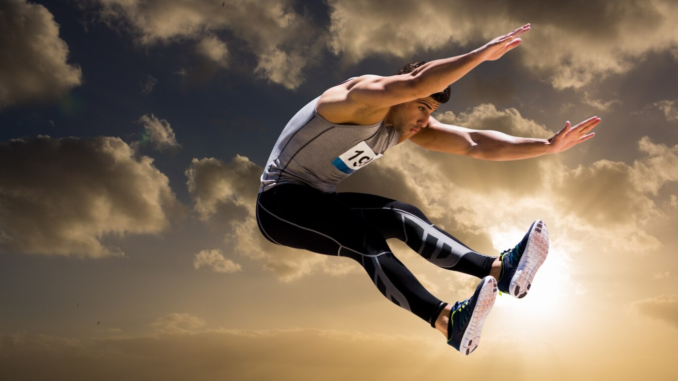
Ever wondered why sprinters are so fast? It’s not just natural ability and intense training, but the movements behind them are important. That is why platforms such as melbet that offer sports betting put more emphasis on the scientific novelty in athletics. Let’s look at those principles which make the fastest runners in the world lead.
Fundamental Principles of Sprint Biomechanics
Sprint biomechanics is all about optimising our bodies’ movements for maximum speed and efficiency. Key principles include maintaining proper posture, efficient limb movements, and minimal ground contact time. Sprinters should lean forward to improve their acceleration.
In addition, effective sprinting also involves powerful arm swings and high knee lifts. These motions enable sprinters to have a more dynamic stride, thus covering great distances with each step. Understanding these principles and applying them will help sprinters perform better and reduce cases of injury.
Muscle Dynamics and Sprinting
Sprinters highly depend on muscle dynamics for success. Here is what they focus on:
- Strength Training: Building up muscles through resistance exercises for increased power and speed.
- Plyometrics: Getting involved in explosive activities like jump squats that can enhance muscle responsiveness.
- Flexibility: Incorporating stretching routines to maintain full range of motion and minimise injury likelihoods.
- Recovery: Emphasising proper restorative measures in order to allow muscles to repair themselves.
These constituents work together to ensure that muscle-powering sprints have enough potential for high-intensity movements necessary for athletes to achieve optimum performance in this field.
Methods of Most Favourable Sprint Performance
Athletes use particular techniques to improve their speed and efficiency in order to achieve optimal sprint performance. This involves precise body movements and body position to maximise the production of power, thus reducing resistance.
Starting Block Technique
The starting block technique is important for a powerful take-off. Sprinters put their feet tightly against the blocks to provide a strong base that drives the explosive start. When they push off using maximum strength, they move ahead explosively. The angle maintained by the body in this phase is essential as it helps in converting force into forward motion.
Sprinters will repeat starts often so that they can develop their muscle memory and sharpen reaction times. The aim is to go from the blocks into those first few strides as fast and smoothly as possible to set up the pace for the remainder of the race. Being consistent with this strategy will knock off precious milliseconds, which are very significant in a competitive field.
Upper Body Mechanics
Efficient sprinting depends on upper body mechanics. Proper arm swing adds balance to powerful leg movements, leading to forward impetus. Their elbows are kept at around 90 degrees, whereas from the shoulders, they swing them, creating rhythm and equilibrium.
A relaxed but controlled upper body should be maintained throughout. Tension in the neck region and shoulders can interfere with performance, leading to exhaustion. Instead, loose arms, keeping hands swinging between hip height down towards the chin, help keep pace with quick turnover legs. When higher-level sprinters learn how to use their upper bodies when running, both speed increases overall, and form stability is maintained throughout any given race.
Advancement in Technology and Sprint Training
Technological advancements have considerably enhanced sprint training by helping athletes stretch their boundaries. Below are some of the major breakthroughs:
- Wearable technology: Devices that collect data such as speed, acceleration, or heart rate to give feedback immediately.
- High-speed cameras: They help in doing an in-depth analysis on form and technique as well as noting down areas that need improvement.
- Software for biomechanics: These are programmed to imitate running movements to develop better training plans and prevent injuries.
- Cryotherapy: Cold treatments reduce inflammation and accelerate recovery after intense workouts.
By employing these technologies, sprinters can refine their techniques, improve performance and maintain peak physical fitness levels.


Injury Prevention in Sprinting
For sprinters, preventing injuries is critical because even minor setbacks can affect their performance. Regular strength training is important for building up muscle resilience and increasing overall stability. By engaging the core muscles around the hips and lower body, powerful foundations for sprinting can be created through these exercises.
Additionally, proper warm-up routines should include dynamic stretches and mobility drills that loosen up muscles and joints during high-intensity sprints, thus reducing the likelihood of strains or sprains. In addition to rest, hydration and nutrition are the main components of recovery for an athlete from injury. Thus, it is important to pay attention to them at all times so a competitive athlete will always be ready for competition.
Final Words
Understanding biomechanics coupled with the application of advanced training practices is vital for sprinters who are looking forward to achieving peak performance. Through technology integration and focus on the prevention of accidents while taking part in sporting activities, athletes will achieve their best potential so they remain competitive in this fast world of sprints!